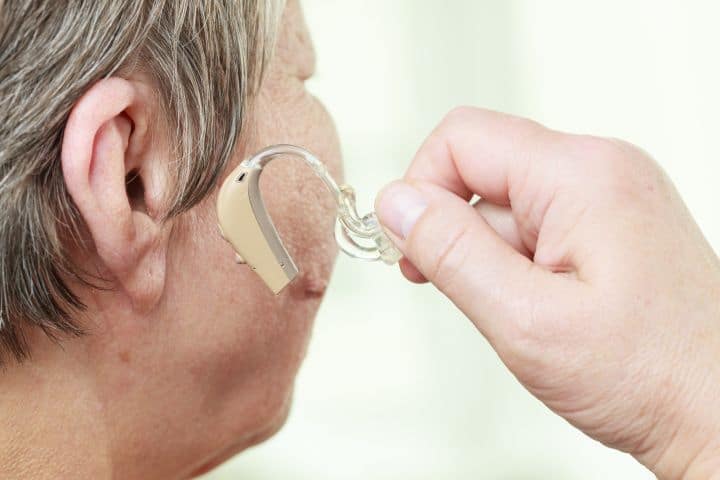If you or your loved one are having difficulty hearing, you might have come across both hearing aids and hearing amplifiers as a possible solution. This article intends to clearly demarcate the purpose of one versus the other.
In a nutshell, hearing aids are custom-made and doctor fitted whereas hearing amplifiers are generic and can be bought over the counter or online.
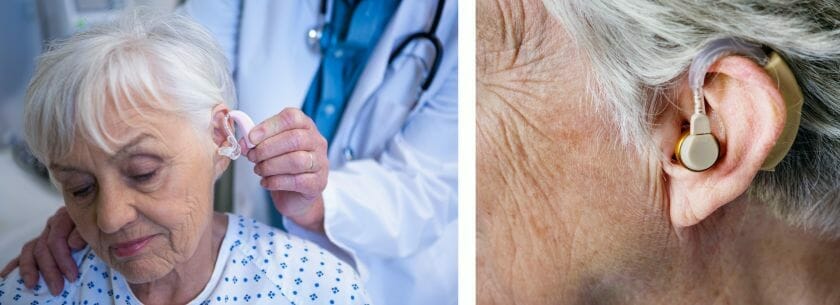
What is a hearing amplifier?
Personal sound amplifying products, or PSAPs, are commonly known as hearing amplifiers. These devices are designed to increase environmental sounds for people who are NOT suffering from hearing loss. They are not selective in the sounds that they amplify, nor are they concerned with enhancing specific frequencies of sounds.
Common uses of hearing amplifiers are hunters listening closely for prey, ornithologists hearing bird sounds from afar, attendees at a lecture when they are too far from the podium and listening to infants who are playing in another room.
What is a hearing aid?
Hearing aids are finely tuned to your personal hearing impediments. They are custom-made based on an analysis of the particular frequencies of sound that you are finding difficult to pick up from the environment.
Most hearing aids are digital and are powered by a battery. A small microphone collects sounds from nearby and a computer chip with an amplifier digitizes the sounds. After that, it analyzes the sound and adjusts its basis on your hearing loss signature, listening needs, and the sound level near you. The amplified sounds are then fed back to your ears.
Below are some of the key differences between a hearing aid and a hearing amplifier
- Amplifiers cannot separate speech from noise
- Amplifiers are not customizable to your hearing loss signature
- Amplifiers do not have feedback cancellation or wind noise reduction
- Using amplifiers for real hearing problems ends up making them worse by disguising them in the initial phase.
How do I know if I have a hearing problem?
Below are some early warning signs that you may have a hearing problem:
- People suddenly start complaining that you are shouting when you talk, even though you don’t feel anything different
- You need the TV volume turned up to a setting that seems too loud to other people
- You find yourself asking people to repeat their words because you were not able to either hear them or understand them, especially when you are sitting in groups or when there is a lot of background noise
- You find yourself turning to one side to hear better because the other ear seems to be hearing less.
- You have to strain all the time to hear
- You are unable to hear things like a dripping tap or the high note of a violin
- You feel a sensation of mumbling or muffled hearing when others are talking

You may also like Best Device for the Elderly to Listen to Audiobooks
Hearing aids: Styles and Features
There is a large variety of Hearing aids based on their size, the way they are placed in your ears, special features and of course price.
We summarize below the major styles, from smallest to biggest. Smaller hearing aids, while seemingly less conspicuous and therefore more desirable, are often not able to support the strength needed for your personal purposes. Therefore it is important to choose hearing aids wisely.
Completely in the canal (CIC)
A completely-in-the-canal hearing aid, as the name suggests, is molded so as to fit completely inside your ear canal. They are recommended in adults who have a mild to moderate case of hearing loss.
CIC hearing aids are the smallest and least visible amongst the different types of hearing aids, with one of the smallest batteries to boot. They are less likely to pick up wind noise and the smaller batteries have a very short life, causing them to be replaced again and again.
Typically CIC aids don’t have extra features such as directional mics or volume control buttons, and due to the fact that they are lodged completely in the ear canal, they are often susceptible to earwax clogging their speakers.
In the canal Hearing Aid (ITC)
In the canal hearing aids fit partially inside the ear canal and are used for mild to moderate hearing loss cases in adults. These are again inconspicuous and typically include some features which cannot be put into CIC aids.
But those features are difficult to adjust because heaof the small size of the hearing aid. They are also susceptible to their speaker getting clogged by earwax.
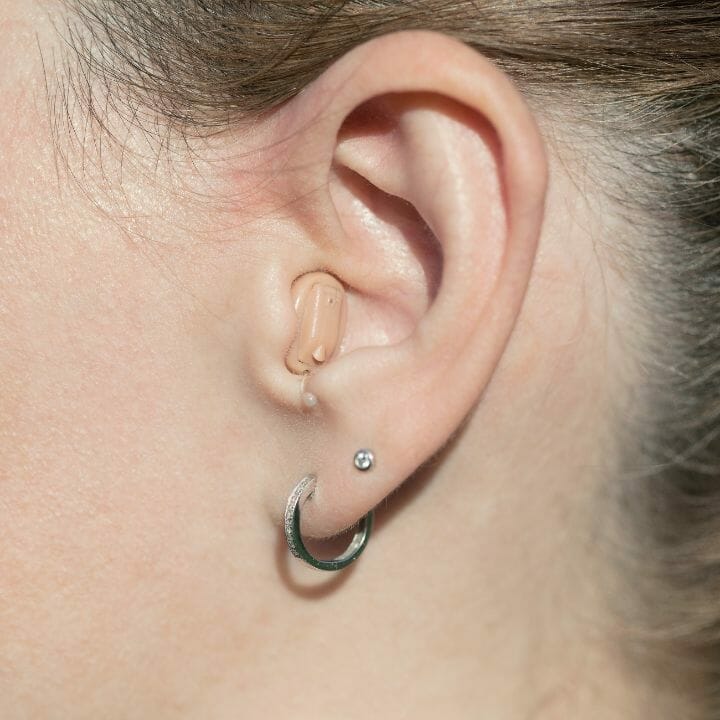
ITE Hearing Aid
ITE hearing aids can either be (full shell) – which covers most of the ear or else half-shell (which only covers the lower part of your ear). ITE hearing aids are recommended for people who are suffering from mild to severe hearing loss.
ITE are typically larger, and therefore they have features that just won’t fit on the other styles mentioned so far. They are obviously easier to handle, use a larger battery life which requires less maintenance, and most are able to pick up wind noise.
However since part of them continues to be inside the ear, their speakers are still susceptible to clogging because of earwax. There are home removal kit available in the market
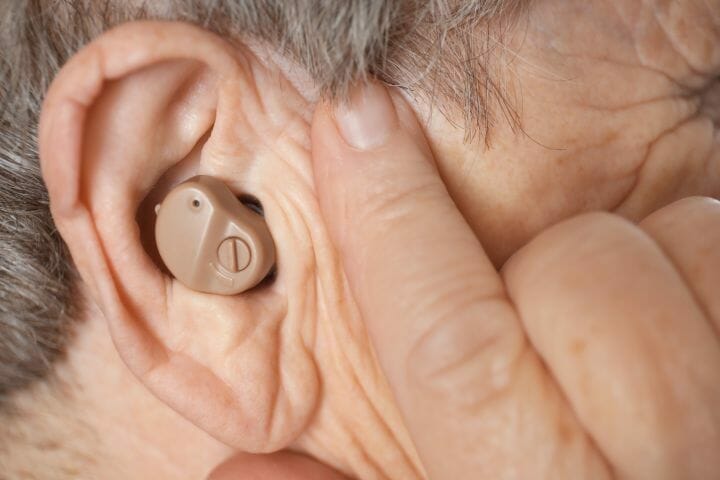
BTE Hearing Aid (Behind The Ear)
These hearing aids have a custom earpiece (known as an earmold) connected to the hearing aid which goes into the ear. The other end goes around the ear. BTE hearing aids can be used for almost all types of loss of hearing and in almost all ages.
However, BTE hearing aids are traditionally large in size and bulky and difficult to manage, not to mention the fact that they are visible to everyone.
They are capable of much more amplification than others, typically have better features and pick up wind noise more easily than other styles.
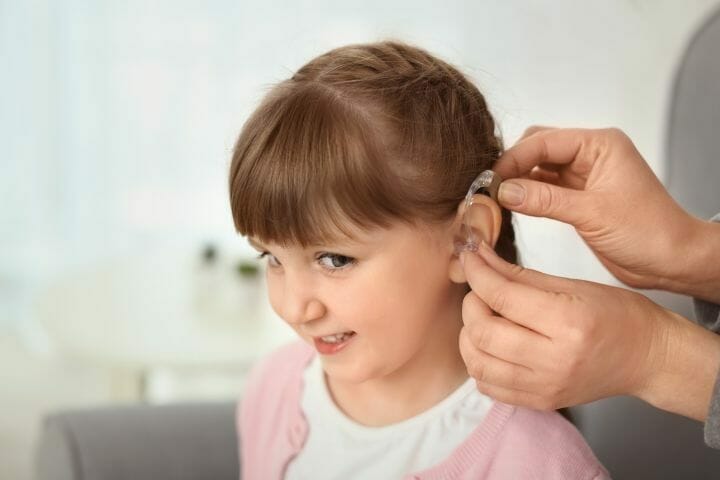
Receiver in canal (RIC) or Receiver Inside The Ear
These are similar to BTE, except that the speaker is in the ear canal. A small wire connects the two pieces. The benefit being that the piece outside the ear is behind the ear, whereas the rest of it is hidden inside the ear, making it a lot less conspicuous. However, like all other in the canal options, RIC is susceptible to earwax clogging.
Open fit
Open-fits are a variation of BTE with a thinner tube. This keeps the ear canal open, letting low-frequency sounds to enter naturally and high-frequency sounds to be amplified by the hearing aid. Therefore, it is a good option for mild to moderate hearing loss.
They are less visible than the BTE option and don’t plug the ear like the ICE options, however, they are a bit difficult to handle and adjust
You may also like Best Headphones For Autistic Children And Adults
Optional Features
Noise reduction: Most hearing aids have a noise reduction facility, though the magnitude varies by size.
Directional mics: Mics that are aligned to improve pickup of sounds coming from your front, while softening of sounds coming behind you. Directional mics are helpful when there is a lot of background noise.
Rechargeable batteries. Help to make maintenance easier.
Telecoils: These come as paired with telecoil phones, which makes it easier to talk on those phones. Telecoils eliminate environmental noise and only pick up the sound from the telephone.
Wireless connectivity: Modern day hearing aids can interface with Bluetooth enabled devices. This helps you to hear the sounds from those devices more clearly.
Remote controls: Makes it easier to adjust special features since the hearing aid itself is too small for comfortably sized buttons etc.
Direct audio input. You can plug them in directly to a TV or computer, just like a headphone.
Variable programming. Preprogrammed settings for different types of environments
Environmental noise control: Noise cancellation feature.
Synchronization: For people who need to wear two hearing aids. The two hearing aids can be synchronized so that one controls features of both.
You may also like Best Medical Alert System For Hearing Impaired
Planning to buy a hearing aid
When thinking of buying a hearing aid, always follow the following cardinal rules
Consult a specialist: See if correctable causes can be ruled out, such as an inner ear infection of simply accumulated earwax. Get a proper hearing test done.
Talk to an audiologist: They will assist you in choosing the most appropriate device for your hearing impediment.
Check if there is a trial period on the device. Most hearing aids come with a trial period., and it does take a bit of time to get used to them.
Check how powerful the device can be: Your hearing may worsen in the future, and you might need a more powerful device than the one you are currently buying. It is best to buy something that can cater to more, in-case things worsen.
Warranty: Make sure there is a warranty on the device in case there are defects
Don’t go by manufacturer claims: Hearing aids will never be able to restore normal hearing. They are not a cure. Anyone claiming otherwise is likely selling a bad product.
Expense planning: Hearing aids can cost anywhere between $1000 to several thousand dollars. Talk to your audiologist who might guide you towards economical options like hearing amplifiers instead of hearing aids.
Conclusion
Hearing aids are finely tuned machines, devised basis your particular hearing impairment. Hearing amplifiers are simplistic amplification devices that just pickup sound and make it louder.
Hearing amplifiers are a one-size-fits-all sound enhancement gadget, whereas hearing aids can help address the particular types and frequencies of your hearing loss.
Therefore, it is very important to understand the difference and not use amplifiers to cover up a genuine hearing disorder.
We have given several pointers in this article on the types and features of hearing aids, and some of the factors to consider before buying them.
As always, before taking any such a step, do consult your doctor or audiologist, get a thorough hearing checkup done and follow their advice to the letter.
If you are planning to buy used hearing aids, then you should read Are Used Hearing Aids Right for You?

